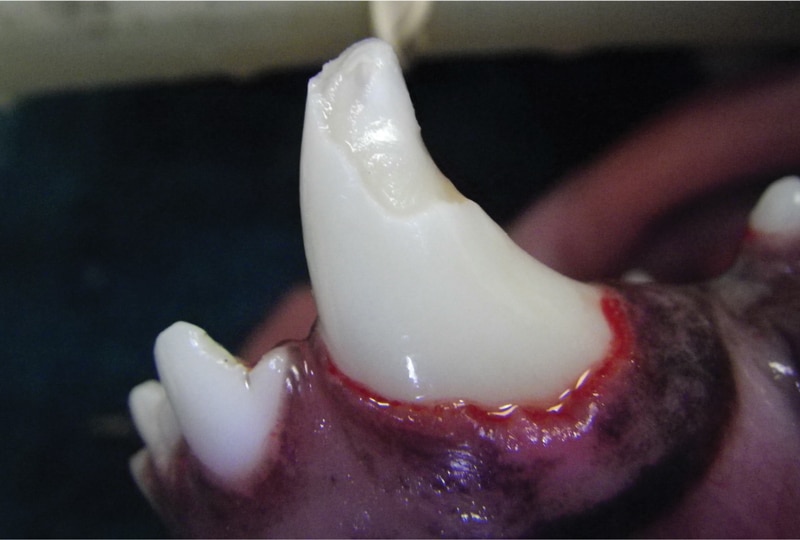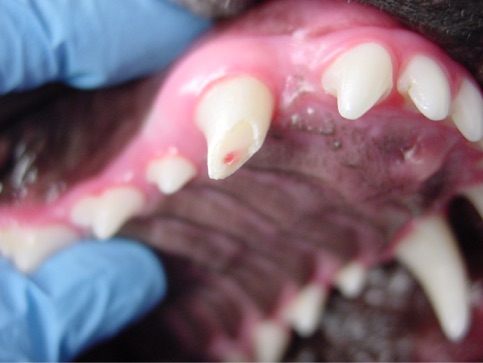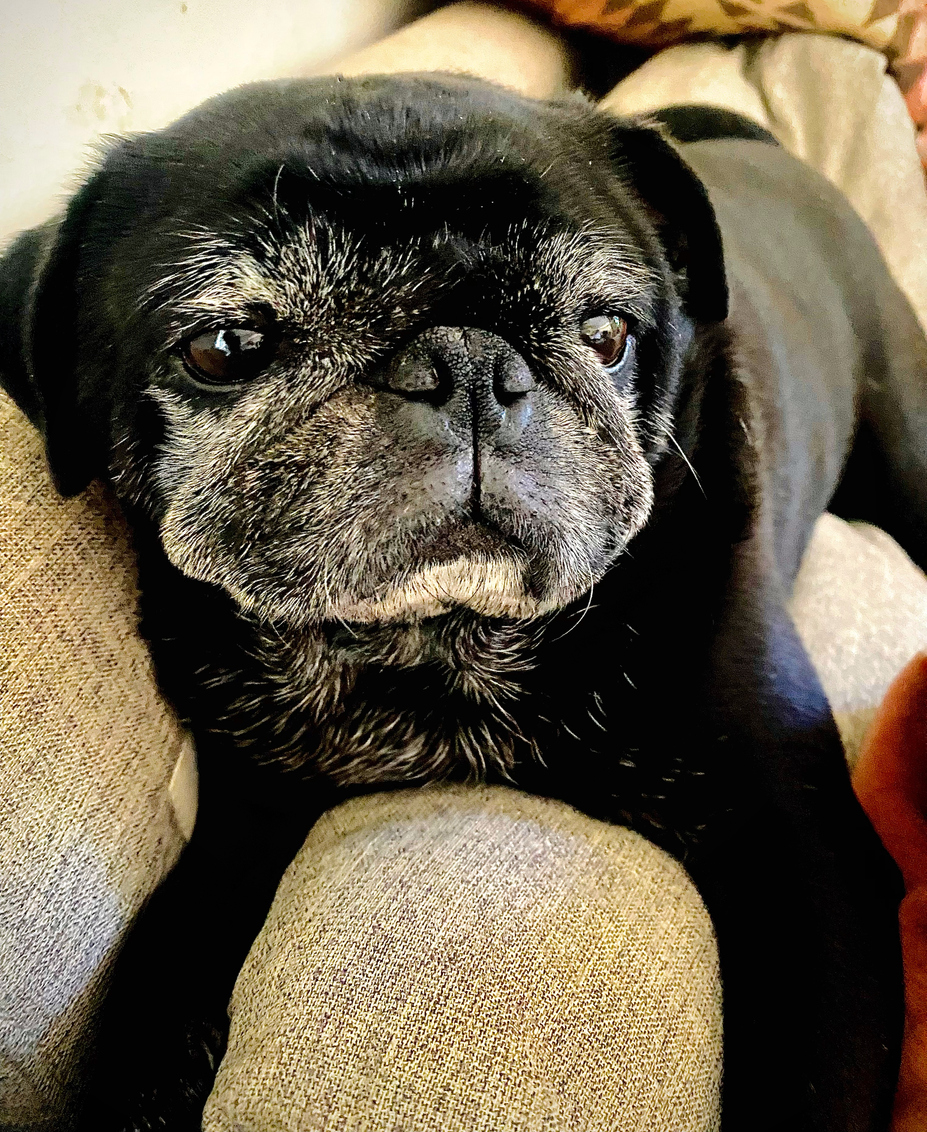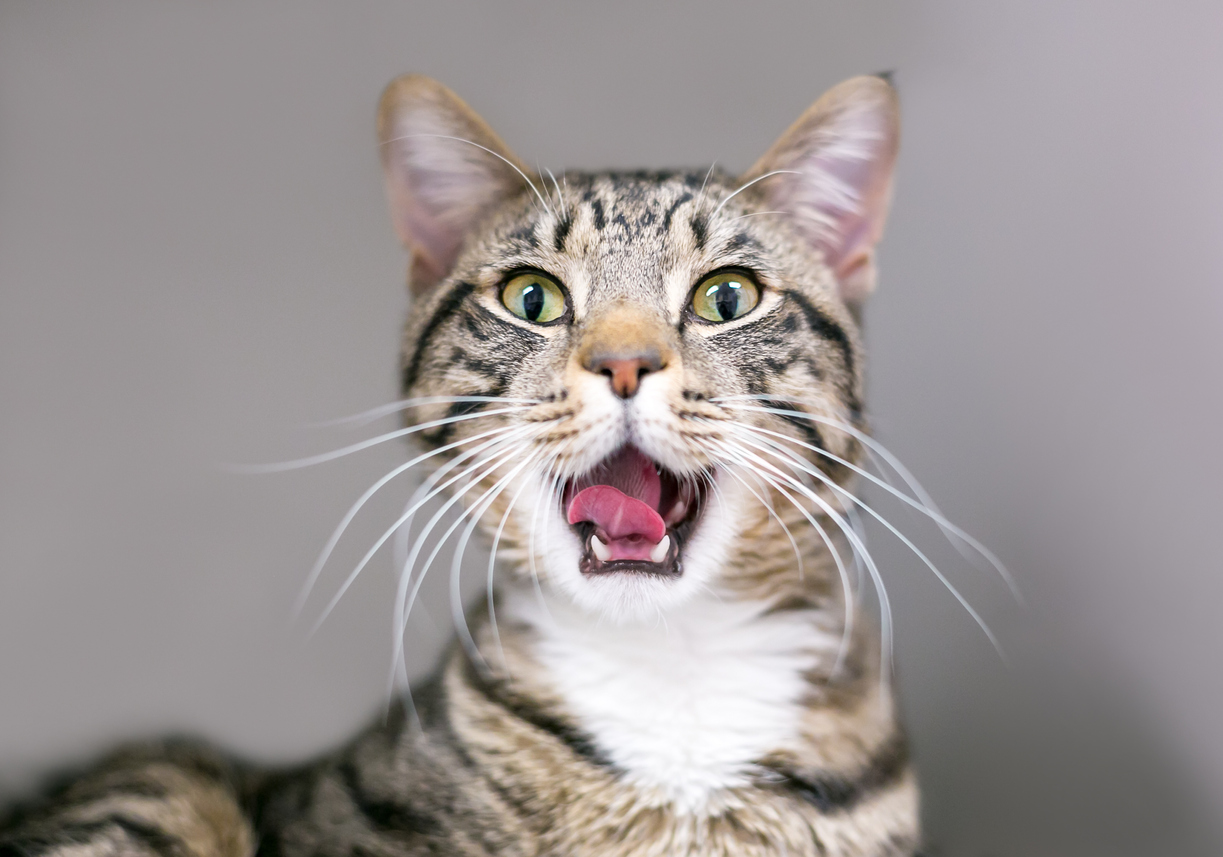Traumatic Injury to Teeth
How do pets break their teeth?
Fractured teeth are a common occurrence in pets and can result from external trauma (e.g., when hit by a car, or an object) or from chewing on hard objects such as antlers, bones, or other hard, non-bending chew toys. The most frequently broken teeth in the pets are the canine (fang) teeth, and the large upper pointy cheek teeth in the back of the mouth.
What do broken teeth look like?
Sometimes the fractured tooth results in a chip of the enamel (hard mineralized surface of teeth) and dentin (bony tissue beneath the enamel), and other times the tooth so fractured that the nerve is exposed to the outside.
There are five classifications of tooth fractures in dogs and cats:
- Enamel fracture.A fracture with loss of crown substance confined to the enamel.
- Uncomplicated crown fracture.A fracture of the crown that does not expose the pulp.
- Complicated crown fracture.A fracture of the crown that exposes the pulp.
- Uncomplicated crown-root fracture.A fracture of the crown and root that does not expose the pulp.
- Complicated crown-root fracture.A fracture of the crown and root that exposes the pulp.
- Root fracture.A fracture involving the root of the tooth.

Are broken teeth in pets a problem?
Yes, fractured teeth in pets are a problem. When the enamel is chipped exposing the dentin the affected tooth becomes sensitive to heat, cold, and pressure. It is far worse when the pulp (nerve) is exposed. The inside of the tooth fills with infected material that eventually trickles through the openings in the tip of the root into the jaw. Since the bacteria have a secure hiding place inside the root canal, the body’s immune system is unable to clear the infection, even with antibiotic treatment. In time, bacteria exiting the tooth’s apex can spread causing local tooth pain every time the pet chews, and infection in other parts of the body.
What are the signs of a fractured tooth?
Signs to look for include:
- Chewing on one side
- Dropping food from the mouth when eating
- Excessive drooling
- Grinding of teeth
- Pawing at the mouth
- Facial swelling
- Lymph node enlargement
- Shying away when the face is petted
- Refusing to eat hard food
- Refusing to chew on hard treats or toys

What can be done to fix broken teeth?
Most fractured need to be treated to create pain free function. There are typically two options if the nerve is exposed: root canal therapy and extraction. If the nerve is not exposed the tooth can be restored without root canal therapy. Ignoring the problem is not a good option as the tooth will become sensitive and painful.
Root canal therapy involves removal of the diseased tissue inside. As with people, an X-ray of the tooth evaluates the surrounding bone and confirms that the root is intact. Instruments are used to clean, disinfect, and fill the root canal to prevent future bacterial contamination and save the tooth. Long-term results of root canal treatment are generally excellent.
A metal or tooth colored crown may be placed following root canal treatment, depending on how much of crown is missing and dog’s lifestyle.
Vital pulp therapy may be performed on recently fractured teeth in younger pets (under 18 months of age). This treatment keeps the tooth alive. In vital pulp therapy, a layer of the pulp is removed in order to remove surface bacteria and inflamed tissue. A medicated dressing is placed on the newly exposed pulp to allow healing. A protective barrier of dental composite is placed on top of the dressing. Teeth treated with vital pulp therapy may require future root canal treatment.
Removal of broken teeth is the other option; however, most veterinarians try to avoid extraction of fractured, but otherwise healthy teeth. For the large canine and chewing teeth the removal procedure involves oral surgery, comparable to removing impacted wisdom teeth in human patients.
How can I prevent my pet from fracturing more teeth?
Examine your pet’s treats and chew toys. Eliminate any bones, antlers, cow hoofs, nylon chews, and pizzle sticks. Throw out chews or toys that do not readily bend. Ask your veterinarian or look for products with the Veterinary Oral Health Council seal of acceptance for dental treats, diets, and devices that are safe and effective in decreasing the accumulation of plaque and/or tartar. Cats that have sustained tooth fractures from outdoor trauma (cat fights or car accidents) should be kept indoors.



